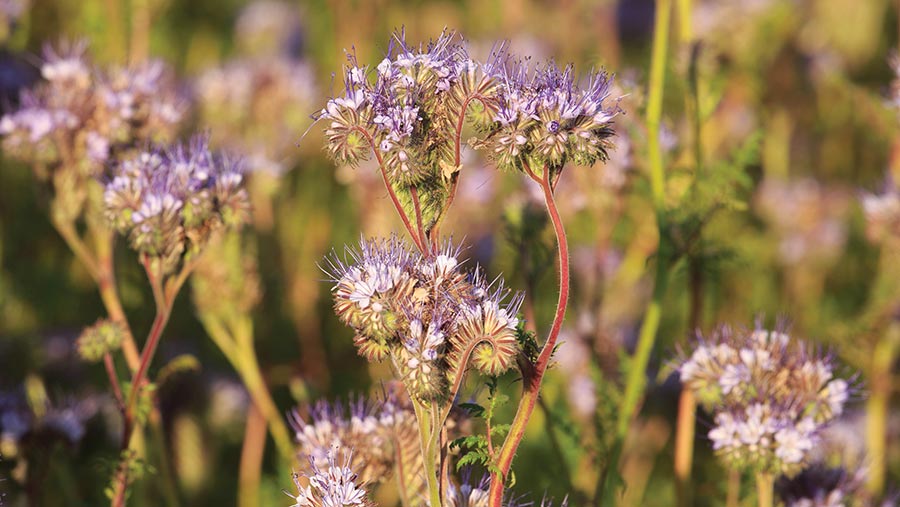Research quantifies role of cover crops in carbon capture
 © Tim Scrivener
© Tim Scrivener Five years of trial work in Northamptonshire have shown that cover crops in a direct drilling system removed 27t/ha of carbon dioxide equivalents, highlighting their role in reducing a farm’s carbon footprint.
However, the trials also showed that 17t/ha of carbon dioxide equivalents can be lost from soil with deep tillage.
See also: Grower’s soils improve and inputs reduce with regen approach
Independent researcher David Purdy has spent the past five years at Agrovista’s AgX trial site investigating the effect of cultivations and cover cropping on soil biology and structure.
And he believes the key to good soil health is to maximise the amount of energy farmers get into them. “It’s all about getting energy into soils and photosynthesis is where it starts.”
Biomass drives worm numbers
He points to the relationship between cover crop biomass and worm numbers on the site’s silty, clay loam. “As cover crop biomass increases, you see a rise in worm numbers.”
And as worm numbers increase, so do infiltration rates. He says this is because there are more worm channels in the soil along with more roots.
One factor driving cover crop biomass is drilling date, and one trial looked at three different timings – mid-August, end of August and mid-September.
Results showed earlier drilling increased biomass for all three species trialled – black oats, phacelia and clover.
After five years of no-till and cover crops, David is now seeing more organic matter in soil, but there is scope to go further.
“Soil organic matter content is 8.65% near the hedge, and plots range from 3.7% to more than 5%, so we know they are capable of holding more [organic matter].”
Carbon stocks
One area that is seeing more interest is carbon trading and the ability to earn credits with a regen approach, so David looked at the impact of cultivations and cover crops on soil carbon stocks.
Measuring is tricky, involving the taking of soil cores and measuring soil carbon and bulk density at four different depths – 0-15cm, 15-30cm, 30-60cm and 60-90cm. The first finding was that carbon decreases with increasing depth.
Looking at 0-15cm, cultivating with a Kverneland DTX – a standard piece of kit in that area – led to a reduction from 52t/ha to 47t/ha of carbon stocks.
Effectively, deep tillage burnt 3t/ha of carbon, which equates to 17t/ha of carbon dioxide equivalents.
For cover crops, he saw an increase at 15-30cm with carbon stocks increasing from 36t/ha to 44t/ha (27t/ha carbon dioxide equivalents). This is the depth where the bulk of the roots are, which explains why no significant differences were seen at other depths.
David concludes that cover crops do sequester carbon, while deep tillage is harmful.
He adds that levels in the field are about half that of the grass margins, so there is plenty of opportunity to bury more carbon in soil.

